#cagayan province
Explore tagged Tumblr posts
Text
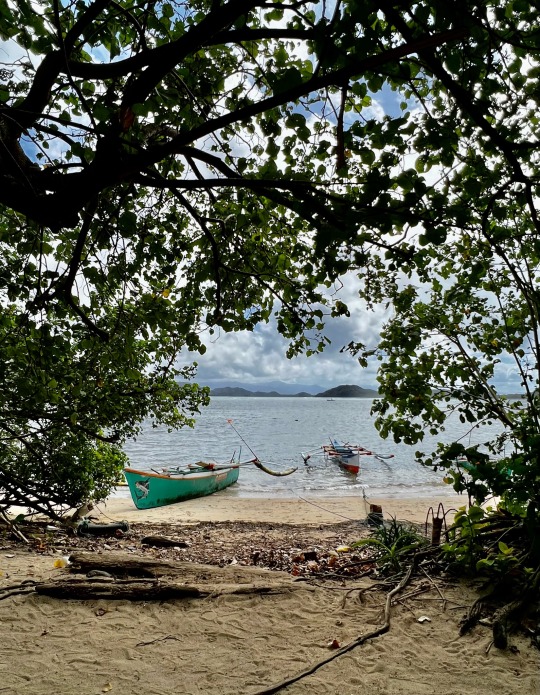

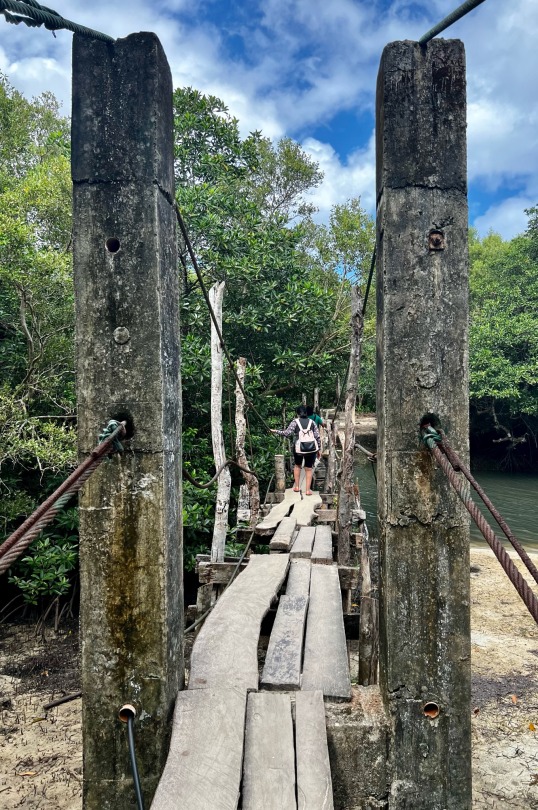
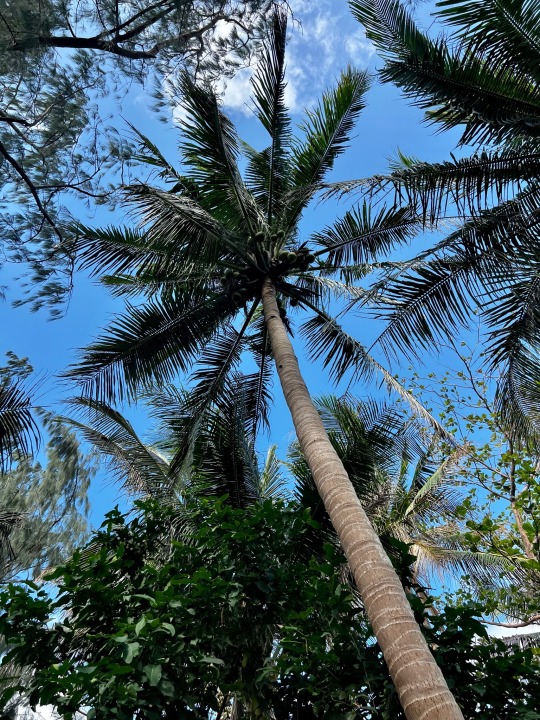
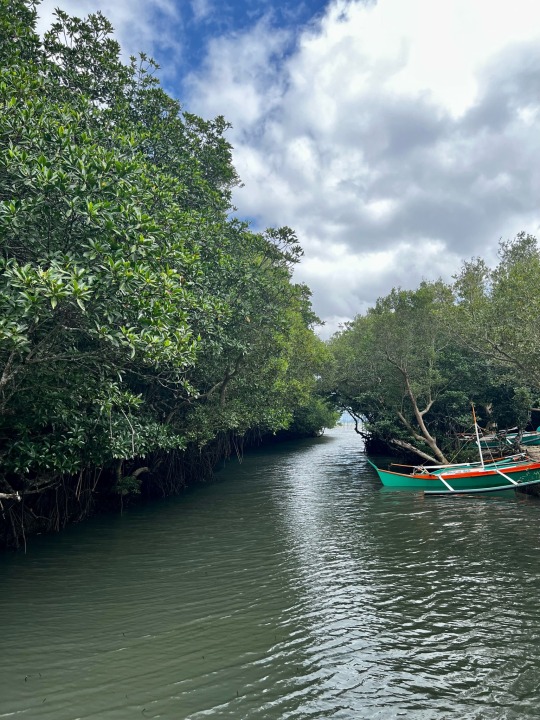
Punta Verde, Palaui Island
#palaui island#cagayan province#island hopping#nature hikes#trekking#iphone 13 pro max#weekend#roadtrip
8 notes
·
View notes
Text
Rediscovering the Philippines: Off-the-Beaten-Path Adventures in Luzon
Explore the hidden gems of Luzon with #FilipinaWanderer! From the tranquil Calayan Island to the biodiversity hotspot of Adams. Embrace adventures beyond the beaten path. #RediscoverPhilippines
When most travelers think of Luzon, images of the bustling cityscape of Manila, the historical landmarks of Intramuros, or the scenic landscapes of Baguio may come to mind. Yet, this vast region holds many lesser-known wonders that offer a different kind of experience – raw, unique, and deeply intertwined with local traditions and natural splendor. Luzon, the Philippines’ largest island, is…

View On WordPress
#RediscoverPhilippines LuzonAdventures OffTheBeatenPath FilipinaWanderer AdventureTravel#2023#Adams#Adventure#Bulusan#cagayan valley#Calayan Island#Capones Island#filipina wanderer#Ilocos Norte#Luzon#Mountain Province#Off-the-Beaten-Path#Sagada#Sorsogon#Travel Philippines#Zambales
1 note
·
View note
Text
I JUST came back from the Philippines! Just brought y’all some pasalubong that DOESN’T need any customs clearance or a balikbayan box!
And here’s another:
Taken 2/28/2023.
#butiki#house lizards#common house gecko#pinched fingers#instagram#philippines#Cagayan Valley#Isabela Province#things that just make sense
0 notes
Text
Cagayan de Oro photo exhibit takes visitors on journey through time
via Rappler, 21 February 2023: The exhibition features the history of Cagayan de Oro with a blue and white ceramic going back to the 14th century. #cagayandeoro #philippines
via Rappler, 21 February 2023: The exhibition features the history of Cagayan de Oro with a blue and white ceramic going back to the 14th century. The rich and diverse heritage of Mindanao takes center stage in Cagayan de Oro, as one of the city’s oldest and biggest universities celebrates its 68th founding anniversary with an exquisite photography exhibition. The exhibit, La Castilla Blue and…

View On WordPress
0 notes
Text
Since 2021, such attacks have been documented by human rights groups, who stressed that these put marginalized communities in danger. As such, Karapatan said these incidents constitute a clear violation of international humanitarian law (IHL).
From 2021 to 2024, Karapatan documented 9,163 individuals or about 1,953 families who were affected by aerial bombing and indiscriminate strafing in the province of Cagayan. Human rights groups attribute these attacks to the Philippine Air Force.
During this time, a total of 17 incidents were recorded in Cagayan: 11 bombings and strafing, 2 bombardment, and 4 strafing attacks. Six occurred under the Duterte administration while 11 happened during the Marcos Jr. administration. This is part of the 13 regions in the Philippines subjected to aerial bombings where Karapatan documented 378,203 victims.
“One of the emblematic cases under the Duterte administration was the bombing of Marawi City, when the President declared martial law in Mindanao on May 23, 2017 that lasted until December 31, 2019.“ said Karapatan Secretary General Cristina Palabay.
In the first year of Marcos Jr., there were 6,931 victims of bombings documented as part of the government’s counterinsurgency campaign, Karapatan said.
In May, an international people’s tribunal issued a guilty verdict to Marcos Jr. and the US government for violating the international humanitarian law.
In the initial verdict furnished to the media, the five-member jurors of the [International Peoples Tribunal or] IPT revisited the US government’s role in the counterinsurgency program that allowed such war crimes to happen, saying that the “heavy bombardment and forced displacement of communities, and the killing of civilians and hors de combat of state forces would not have been possible without the direction, arms, and training provided by the US government.
2024 Aug. 12
71 notes
·
View notes
Text
So, I did a thing; basically, I took most of the Rangers who were played by Filipino actors ( and extra Rangers who weren't played by Filipino actors but I also wanted to include ) and basically designated which ethnolinguistic backgrounds and provinces would they be from if they were Filipino in canon ( and if they were born there or not ). Seven of the Rangers in this edit were played by actors of Filipino descent [ Alyssa, Madison, Rose, Theo, Emma, Brody, and Ollie ( the actors of Emma, Brody, and Ollie are mixed-race ) ]; the ethnicities I gave them are not based off the ethnolinguistic backgrounds of the actors' families, for I did not want to pry on their backgrounds because that's private information, so these are my own ideas. Two of them aren't played by Filipino actors, however, their characters are siblings of the characters who were played by Filipino actors [ Vida and Aiden/Levi ]. As for Kendall? Honestly, that's just pure projection; Kendall isn't played by a Filipino actress but I wanted to make Kendall be from the same ethnolinguistic backgrounds as I am because..... look, she's my favorite— I'm legitimately her IRL— and I have the power to, okay?!
List of my headcanoned ethnolinguistic backgrounds + provinces under the cut if you need them. Again, these are not canon and are just the result of projections.
Filipino-Headcanoned!Rangers and their Ethnolinguistic Origins
Alyssa Enrile - Bicolano ; Family came from Tabaco City, Albay Madison and Vida Rocca - Partially Cagayano ; Family came from Tuguegarao City, Cagayan Province Rose Ortiz - Bisaya [ Samareño/Waray ] ; Born in the Municipality of Lapinig, Boundary of Northern and Eastern Samar Theodore Martin - Bisaya [ Cebuano ] ; Born in Cebu City, Cebu Emma Goodall - Partially Tagalog ; Family came from Batangas City, Batangas Kendall Morgan - Partially Bisaya [ Boholano ] and Mindanawon [ Zamboangueño + Kalagan ] ; Family came from Malaybalay City, Bukidnon Brody and Aiden Romero - Partially Mindanawon [ Zamboangueño + Kalagan ]; Family came from Zamboanga City, Zamboanga Peninsula Ollie Akana - Partially Bisaya [ Boholano ] ; Family came from the Municipality of Calape, Bohol
#power rangers#wild force#power rangers wild force#mystic force#power rangers mystic force#operation overdrive#power rangers operation overdrive#jungle fury#power rangers jungle fury#megaforce#super megaforce#power rangers megaforce#dino charge#power rangers dino charge#ninja steel#power rangers ninja steel#dino fury#cosmic fury#power rangers dino fury#power rangers cosmic fury#alyssa enrile#madison rocca#vida rocca#rose ortz#theo martin#emma goodall#kendall morgan#brody romero#aiden romero#levi weston
18 notes
·
View notes
Text
Notes on Anitismo - The Ancient Religion of the Philippines by Isabelo de los Reyes.
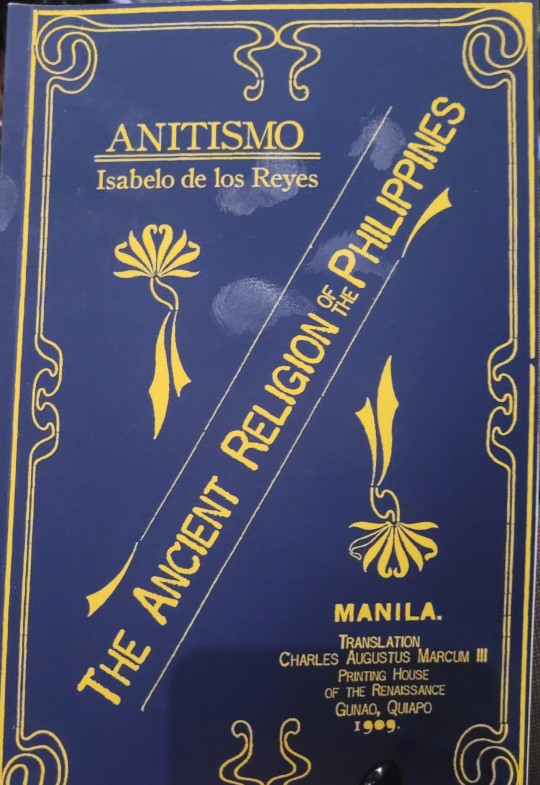
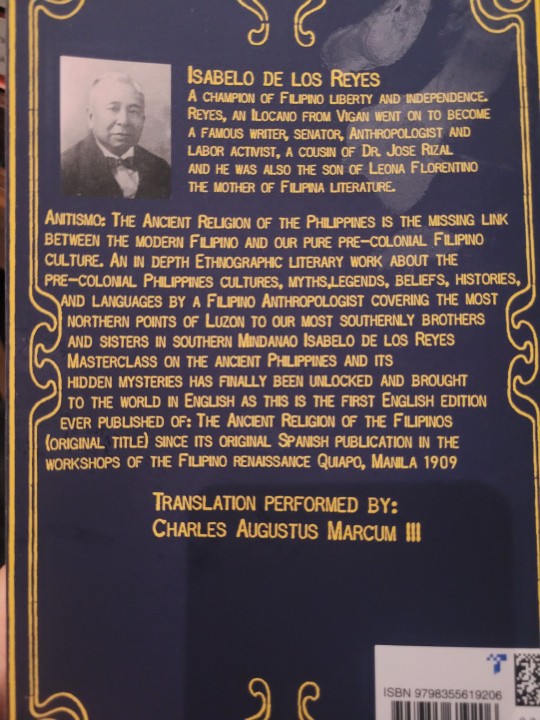
Keep in mind - this was written a while back.
Ancient Chronicles written by the Jesuit hispanic Friars state that at the that the first spaniards set foot in the Philippines from the coast of visayas to Manila there was a considerable population of Muslim converts
This was especially true for Mindanao due to conversion by Islamic teachers from Borneo
De los Reyes argues that because of this, to find native Filipino religion at its purest, we must look to the North
Distinguishing native religion without outside influence such as from Islam, Hinduism, Christianity etc can be tricky
However he argues that the traces of Native Filipino religion can be found in the stories superstitions and advice that belong to various Filipino ethnic groups (Tagalogs, Bicolanos, Zambalenos etc)
From the South of the country in Mindanao to the extreme North like Luzon, De los Reyes argues then native Filipino religion was consistent
This religion was Anitism or the Cult of Anito, meaning souls of the ancestors.
Anitism is not a monolithic religion and hosts a broad pantheon ranging from Gods to animals, nature, elements and space.
The Philippines had its own modern spiritism and De los Reyes argues this may have been the origins of the cults of "Romanist Saints" (Catholic saints) in the Philippines. By this I think he means that Filipino spirituality influenced how Filipinos proceeded with Catholic worship.
The oldest chronicles about the Philippines can be found in various museums and libraries (such as the National Library of Madrid, Covenant of St Augustine in Manila)
We can follow these chronicles, from when the Jesuit Pedro Quirino provided news of religion in the Philippines in 1604, followed by reproductions by others like the Jesuit Colin in 1663 and others such as Fr. Morga, Gonzalez de Mendoza, Aduarte etc.
Fr Morga said that Filipinos practised Anitism in certain regions like Camarines and Cagayan.
Some traditions would say that Manila and its regions were not originally native to the island - they were from Malayan islands and other remote areas.
Before the Spaniards arrived, Islamic teachers from Borneo came to preach and interacted with the locals
Their teachings and beliefs spread quickly throughout the Philippines
Fr. Grijalva writes that they (Filipinos) started adopting their traditions and took on their names.
De Los Reyes argues that Spanish conquistadors' arrival/conquest was delayed because Filipinos were already familiar with various religions and beliefs and also because of the hands of Datu Lapu Lapu. What I believe he is arguing is that Datu Lapu Lapu and the previous exposure Filipinos had to different religions at first delayed Spanish influence from spreading so quickly.
Other islanders who weren't under the control of the government in the Philippines has their beliefs influenced by religious preachers who travelled to them from the Straits of Malacca and the Red Sea.
An account, dated April 20th 1572 (preserved in the archives of India) which is from the conquest of Luzon details "In these towns, closest to the sea, they do not eat any pork, which the moors taught them. But if you ask them, they say they do not know Muhammed or his law." This account was reproduced by Wenceslao Retana.
In actuality, very few Filipinos could understand/read the teachings of the Koran despite the Islamic influence.
In Filipino traditions, reverence and worship was given to nature and the elements, and this was usually consistent throughout the islands.
Native Filipino religion beliefs include elements, animals, stars and ancestors.
Filipino religion in Manila and nearby areas was a mixture or Anitism, Buddhism, Hinduism and Islam brought by the Malays of Borneo.
Vocabulary included Sanskrit and Malay terms such as Bathala, meaning Lord.
However these terms are not used in Northern provinces.
De Los Reyes argues that Itnegs and other mountain tribes conserved and maintained the purest form of Filipino religion
In the Ilocos, Cagayan, Isabela and other provinces of Northern Luzon, native Filipino religion was more prevalent
Hindus and Buddhists converted many in Java and Malaysia.
However Muslim influence became dominant in 1478 - 60 years before the Dutch invasion.
According to Javanese legends, Hindus arrives in Java 78 years before Christ.
The first Malays came from the Minangkabau river region to establish cities in Malacca , Ojohor and Singapore in the 12th century, as per Malacca records.
In the 13th, 14th and 15th centuries, there were various Malaysian emigrations reaching the Philippines
De Los Reyes argues that Filipinos may have also populated the islands of Malaysia, and emigrations could have originated from strong winds coming down from the North.
The first Spaniards found the son of Lakandula, King of Manila, when they went to Borneo.
The emperor's master of ceremonies from Japan (Mr Fujita) argued that emigration likely came from the north and that Filipinos may have some relations to the Japanese.
According to Geographers and Historians of the Mariana Islands, what De Los Reyes calls the "know it all Spanish" - had no idea about interesting ruins found in Oceania, one of which was a prehistoric statue that was being held in the British museum.
He argues there may be hidden megaliths, artefacts, and remnants of lost civilisation in the Philippines, as seen in various locations such as : Butacan caves, Pangibalon Hill, Madias de Iloilo and Nasso.
#Philippines#pre colonial philippines#Filipino#Filipino history#Anitism#Filipino religion#Pinoy#Isabelo de los Reyes#History#Asia#Asian history#South east Asian history#Religion#ancient religion#South east asia#Colonialism#spanish colonial#Spanish colonialism#Philippines history#Philippine history#Anitismo#Keep in mind this was written a while ago so some terms may be outdated#I've tried to interpret some tricky parts the best I could#My ass who is from the Northern Philippines 🗿
66 notes
·
View notes
Text
A collection of activists and researchers from Filipino and Filipino-American organizations released the findings of a peace mission that concluded last month. The Philippines hosts the United States military in nine joint military facilities across the country through the Enhanced Defense Cooperation Agreement (EDCA). The groups claim that the American forces are both violating the terms of their stay and operating without transparency to local communities and even to Philippine authorities.
After a three-week fact-finding mission, the Peace Mission International Delegation finds that “the heightening of US militarism and ramping up of EDCA sites is a threat to Philippine independence and sovereignty and the dignity and safety of Filipino communities,” said Bagong Alyansang Makabayan (BAYAN) USA. Meanwhile, Renato Reyes Jr, of BAYAN Philippines explained that the “increased deployment of American weapons and soldiers to the Philippines is meant to provoke a heightened military confrontation with China.”
Secret War
The mission went to two EDCA sites and to one province where American military operations had recently taken place.
In Basa Air Base of Pampanga province, even the Philippine military was barred from certain perimeters.
Lal-lo Airport in Cagayan province is one EDCA site and researchers found that even the provincial government was only made aware of its use by foreigners when it was announced in the news.
None of the locals know what kind of armaments are now stored at the site. Moreover, US personnel are tapping the wider community to store military items and supplies. The mission pointed out that it goes beyond the bounds of EDCA as it does not fall under any of the “Agreed Locations.”
Last month, the Balikatan (shoulder to shoulder) joint military exercises between the US and the Philippines concluded. The war games drew in over 16,000 soldiers and for the first time made armed excursions outside Philippine territories, around a hundred kilometers from Taiwan.
The town of Santa Ana in Cagayan, northeast of the Philippines is just 400 kilometers from Taiwan.
The mission alleges that the residents of Santa Ana, were kept in the dark about using their town as a site for military exercises throughout Balikatan.
The mission also documented US marines visiting local high schools in civic-military operations. Additionally “We documented reports of locals saying that the loud noise from US military jets scares them and their children. Not only did this directly disturb the fish supply that these people survive on, but it is aimed at normalizing foreign military occupation in their country,” said *Alex of the mission, using a pseudonym for security.
Not unlike in Cagayan, residents of Ilocos Norte province to the northwest of the country, only learned of Balikatan coming to their neighborhoods through news on Facebook. Live fire drills were carried out and some allege that explosions were heard just 30 kilometers from their homes.
The mission also criticized the five-day “no sail policy” enforced by the military, dealing a large blow to the livelihood of local fisherfolk.
Around 1,000 fishing families were affected by the fishing ban, with estimated losses at Php10,000 per family, a staggering amount that will take them months to recover from. Local government allotted aid worth Php1500 to just over a hundred families.
“The people of Ilocos deserve much more than to be treated as pawns in a US war game,” said *Glaiza of the group Gabriela.
Invitation for war
Balikatan is just one of over 500 planned exercises slated for this year alone. It comes alongside moves in Washington to significantly boost military aid to the Philippines to contain China and pursue its strategic interests in the Pacific region.
Last April, at the Philippines-United States Bilateral Strategic Dialogue in Washington, D.C., both countries held talks to expand the number of EDCA sites, investing US$128 million for infrastructure around these areas and stockpiling a greater volume of supplies.
This year, Marcos announced intentions to upgrade the country’s defense with a US$35 billion boost over the next 10 years.
His plans dovetail with a proposal in the US Senate dubbed the Philippine Enhanced Resilience Act, or PERA bill, which would allot US$2.5 billion over the next five years to Philippine military advancement.
Reyes criticized Marcos Jr’s inclination to plunge the Philippines into war at the behest of America. On June 12, Philippine Independence Day, Filipinos rallied at the US Embassy in Manila against using the country as a stooge in their agenda.
On the same day, Marcos delivered a speech with much bravado saying “We see it in the tenacity of our soldiers as they protect every inch of our territory, adamant as they are in the certainty that Filipinos do not, and shall never, succumb to oppression.”
However, after seeing how the American interests with the complicity of the Marcos regime is fuelling the escalation of the conflict with China, the mission asks “is the Philippines truly free? And what of the Filipino people who are sure to be caught in the crossfire if war were to break out?”
9 notes
·
View notes
Text
I hope that Bamban mayor Alice Guo gets arrested soon. Her fingerprints and the alleged Guo Huaping who has the same appearance as the mayor matched. There's also a possible identitiy theft as there was another 'Alice Leal Guo' found with the same damn name, and the same damn birth date, but the face doesnt match. I, along with other tiktok (and possibly reddit users out there, idk) have a theory that she [Mayor Alice] may have killed the other faced Alice Leal Guo, and then took her identity as the mayor is Guo Huaping. This is basically identity theft yet happened years ago. Now, Mayor Alice has nowhere to hide as she is cornered... unless someone protects her. Which i theorize to be former president Rodrigo Duterte. I mean, ther was a picture shown on tv which had Mayor Alice and pres. Duterte! He supports the Chinese and possibly was the one protecting Mayor Alice and her shit for POGO to operate on Tarlac. Then theres these senators in favor of legalizing POGO, along with the fucking Duterte family. I swear, these politicians, senators, government people or whatever they are called, will be the death of the Philippines. They cause nothing but corruption and destruction. There are only few humble ones like Sen. Hontiveros and Sen. Legarda etc. This is a matter of National Security and it is quite alarming to see that there is an influx of chinese people and business here in the Philippines. Im not sure why but I feel like theyre trying to corner us, not only on water, but also on land and politics shit.
And that issue about Cataduanes and the rise of Chinese "students" in Cagayan should be addressed soon after Alice Guo's case. And ive seen some news about chinese vessels patroling on the left [viewer's pov] side of the country, specifically the area of Cataduanes, an island province. It has a pure Chinese mayor and governor and from what i heard, there are lots of business there taken over by chinese. The sheer audacity [for China] to actually invest and spend money to slowly invade shit on us. And now, whats next? A fucking hand salute? A fuckung hymn to sing and shit? Actually no, dont. But the thought of disrespecting and ruining the shit out of them [Chinese] MAKES ME EXCITED tbh. Just the thought of hating on the government alone is exciting. Man i, for sure am getting trouble for posting shit like this. And im going to shout it again
ATIN AND WEST PHILIPPINE SEA!! KAYA NGA MAY TERM NA "PHILIPPINE" EH, KASI SAMIN YON. 🇵🇭
Nakakabaliw eh, ayoko na sanang magpost pa ng ganto, kaso napipilitan ako dahil may kakayanan naman akong magpost at mag-spread awareness. Nakakairita na talaga yung gobyerno eh noh. Or ung mundo in general. Nagkakagulo na lahat, yung tipong iisipin mo nalang na kamatayan ang lunas rito.
8 notes
·
View notes
Text
5 Dangerous Caves In The Philippines
From immense cave systems to dangerous vertical shafts, these natural wonders require expertise and caution. Here are the top five most dangerous caves in the country
Paglugaban Cave (El Nido, Palawan)

Known for hazardous gases and sudden flooding, Paglugaban Cave is one of the most dangerous in the Philippines. Its unstable passages and maze-like structure require advanced caving skills, gas detectors, and specialized safety gear. The risks of toxic gases and unpredictable conditions make it suitable only for experts.
Exploring these caves requires proper preparation, permits, and experienced guides. While their beauty is unmatched, their dangers demand respect and caution to ensure a safe adventure.
2. Jackpot Cave (Peñablanca, Cagayan)
As the second deepest cave in the country, Jackpot Cave plunges 115 meters and spans 355 meters. Its narrow vertical shafts demand technical climbing and safety equipment. Underground streams and steep drops increase the difficulty, making it a challenge even for experienced spelunkers.
3. Sumaguing Cave (Sagada, Mountain Province)
Nicknamed the "Big Cave," Sumaguing boasts spectacular limestone formations and subterranean pools. However, its slippery rocks, steep descents, and tight passages make it treacherous, especially for beginners. Accidents from falls and missteps emphasize the need for proper equipment and experienced guides.
4. Langun-Gobingob Cave (Calbiga, Samar)
Known as Calbiga Cave, this massive system spans 2,968 hectares, making it the largest in the Philippines and the second largest in Asia. Its cathedral-like chambers, complex networks, and remote location pose significant challenges. The presence of bats, snakes, and cave-dwelling creatures adds to the risks. Expert preparation is essential for exploring this vast cave.
5. Odloman Cave (Mabinay, Negros Oriental)

Stretching 8,870 meters, Odloman Cave is the second-longest in the Philippines. Its vast tunnels, underground rivers, and vertical shafts make navigation difficult, often requiring swimming and technical climbing skills. Located in the "Cave Capital of the Philippines," this cave is only suitable for advanced explorers.
2 notes
·
View notes
Text
A Whole New Chapter
Road Trip!
Day 10, Banaue, Ifugao Province
It's a 211 km, 6-hour drive from Tuguegarao to Banaue. The first half of the drive was fine, a pretty straight but rather bumpy road through the Cagayan valley into the foothills. The last half was the curviest road ever. Nonstop turns as we ascended into the highest mountains on Luzon. And I mean nonstop. I think if you put all the straight sections in the last 100 km together you’d have maybe 1 km total of straight road. Think Lombard Street. 100 km of Lombard Street. To make things worse, we were confronted at least once every kilometer with earth and rock slides, and possibly cleanup crews trying to keep ahead of the mess. Constantly down to one lane. Waterfalls coming down the sides of the mountains, onto or under the roadway, sometimes washing out a lane.
The 2-lane road clings to the mountainsides, with one side going vertically upwards, and the other, well you just don’t want to look. Numerous villages, people, and animals also cling to the steep mountains, making the drive even more exciting. With no place to park other than the shoulder-less roadway, it’s pretty much down to taking turns at uncontrolled one-way traffic through the villages. Somehow you make it through. By the time we got here my arms hurt from all the turns. Oh wait… I wasn’t even driving. I pity our driver!
Farmers utilize the land as they can. Can you imagine working this field?

Why make this arduous trek to Banaue? Banaue is considered a must-see heritage site in the Philippines, for its ancient rice terraces. As much as 2000 years ago, the ancestors of the indigenous Igorot people began carving terraces into the steep hillsides to grow rice; they also built an elaborate irrigation system to collect water coming from the mountains and distribute it among the terraces. The terraces are still maintained and used for rice and vegetable cultivation today. Below are views from our hotel room.


An aside - Road Hazards
Spending so much time on the rural roads you see some interesting (i.e., dangerous) sights. Here are a few of my favorite road hazards from this trip.
Two in one. Trikes are a hazard in themselves, turning in front of you with no warning, driving at night with no lights, going 20 km/h and never pulling over. That’s compounded in a rice-growing region. Newly-harvested rice needs to be dried, right? What better place to do that than right on the highway!

Landslides. These were frequent on the road to Banaue. Not sure if these, or the crews trying to clean them up, posed more of a hazard.

And just not sure what to say about this jeepney...

Days 11-12, Baguio, Benguet Province
During Spanish rule, the area now known as Baguio was organized as a “rancheria” consisting of about 20 houses, populated by Ibaloi people. Their name for the area was “Bag-iw”, their term for the moss that grows abundantly in the cool climate. The Spanish corrupted the name into “Baguio”. Following the Spanish-American war, the area was ‘expropriated’ from the Ibaloi who were forced to move, when the American governor of the Philippines territory wanted a cooler place than Manila to locate the capital during the hot summer months. In 1903 President Theodore Roosevelt signed an executive order setting aside the area as a military reservation, and by 1904 a master design for the city by architect Daniel Burnham was completed. The army “hill base” Camp John Hay was established, and soon features such as a mansion for the governor and a manor to be used for U.S. Army officer’s R&R were built. The mansion today is a museum; the Manor is still used as an upscale hotel (pulling up an old one, see “Mark and Georgia’s 2018 Philippines Trip”, days 20-22). Baguio is one of the most popular vacation spots in the Philippines for Filipinos and many international travelers. It’s just a 5-hour drive or a short flight from Manila so makes a feasible weekend escape from the heat – at over 1500 meters (5000 feet) elevation, we saw daytime highs of 22°C (72°F), pleasant indeed!
The drive from Banaue was another 7-hour, 200+ kilometers, pretty easy at first as we descended back into the Cagayan Valley (rice, rice, more rice, and lots of moo moo cows which Max liked). Rice is planted by hand here, one seedling at a time.

At the head of the valley we again drove on twisty 2-lane roads up into the misty pine-covered mountains, once again a 100 km Lombard Street. Did I say “pine-covered”? Have we been mysteriously transported back to California? No, the area around Baguio is noted for its pine trees (Pinus Kesiya, the most common pine species found in Asia). They are rather tall too, though not quite as tall as those around Graeagle.
We wanted a nice end to our road trip, so booked a couple days in a very nice and Max-friendly hotel. Within walking distance of our hotel is Mines View Park. There are no mines to view any more, but it does offer nice views of Baguio. Here’s Max and Georgia getting to know some elderly Igorot ladies in their colorful dress.

We took Max for a walk in Burnham park (remember the architect Burnham), a large mid-city park with a lake full of swan boats. The park was packed with holiday crowds; it was the Philippines Independence Day!


With its cool climate, Baguio is known for growing cool-weather crops, including lettuce, cauliflower, broccoli, cabbage, and strawberries. Nearby Burnham Park is the Baguio Public Market, a huge venue, easy to get lost in, with hundreds of stalls selling local produce. We bought various fresh veggies to bring back home with us, and Georgia also wanted to get some local red rice. Unless you’re Filipino you probably think there are maybe 3-4 kinds of rice… guess again. Even “Dog Rice”!

That wraps up our 2024 road trip, 13 days and a lot of miles. I haven’t added up how many miles – I’ll do that and also find a good map onto which I can plot our course.
Max (have Wubba will travel) is ready to hit the road again!

2 notes
·
View notes
Text




📍Cape Engaño, Palaui Island
2/12/22
#cagayan province#palaui island#cape engaño#weekend#roadtrip#island hopping#iphone 13 pro max#nature hikes
5 notes
·
View notes
Text



Mt. Pulag National Park
 Philippines
Date of Submission: 16/05/2006
Criteria: (ix)(x)
Category: Natural
Submitted by:
Department of Environment and Natural Resources (DENR) - Protected Areas and Wildlife Bureau
State, Province or Region:
Benguet, Ifugao, and Nueva Vizcaya Provinces
Coordinates: N16 30 36 E120 50 20
Ref.: 5030
Export
Word File .doc
Disclaimer
The Tentative Lists of States Parties are published by the World Heritage Centre at its website and/or in working documents in order to ensure transparency, access to information and to facilitate harmonization of Tentative Lists at regional and thematic levels.
The sole responsibility for the content of each Tentative List lies with the State Party concerned. The publication of the Tentative Lists does not imply the expression of any opinion whatsoever of the World Heritage Committee or of the World Heritage Centre or of the Secretariat of UNESCO concerning the legal status of any country, territory, city or area or of its boundaries.
Property names are listed in the language in which they have been submitted by the State Party
Description
Mt. Pulag National Park lies on the north and south spine of the Grand Cordillera Central that stretches from Pasaleng, Ilocos Norte to the Cordillera Provinces. It falls within the administrative jurisdiction of two (2) Regions: Cordillera Administrative Region (CAR) and Cagayan Valley (R2).
The whole park is located within the Philippine Cordillera Mountain Range and is very rugged, characterized by steep to very steep slopes at the mountainsides and generally rolling areas at the mountain peak. Mt. Pulag National Park is the highest peak in Luzon and is the second highest mountain in the Philippines with an elevation of 2,922 m. above sea level.
The summit of Mt. Pulag is covered with grass and dwarf bamboo plants. At lower elevations, the mountainside has a mossy forest veiled with fog, and full of ferns, lichens and moss. Below this is the pine forest growing on barren, rocky slopes. Falls, rivers and small lakes mark the area.
The Park has a large diversity of flora and fauna, many of which are endemic to the mountain. Its wildlife includes threatened mammals such as the Philippine Brown Deer, Northern Luzon Giant Cloud Rat and the Luzon Pygmy Fruit Bat. One can also find several orchid species some of which are possibly endemic to Mt. Pulag, and other rare flora such as the pitcher plant.
Mt. Pulag is an important watershed providing the water necessities of many stakeholders for domestic and industrial use, irrigation, hydroelectric power production and aquaculture.
2 notes
·
View notes
Text
NIA-10 Implements "Green Tech" to Boost Farming in N. Mindanao
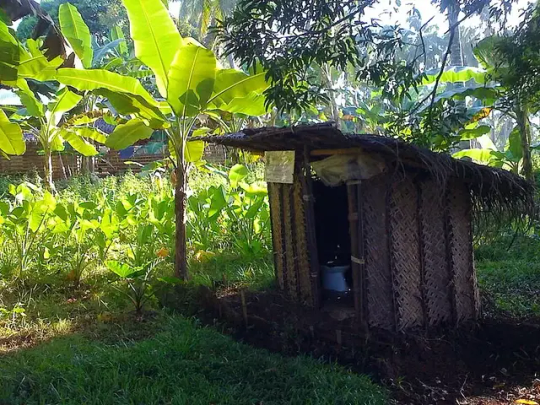
CAGAYAN DE ORO CITY - The National Irrigation Administration in Northern Mindanao (NIA-10) has taken a significant step towards sustainable farming by adopting "green technology" in four areas of the region. The initiative aims to support farmers and enhance their productivity.
Solar Pumps Installed: Saving Costs for Rice Farmers
In an interview on Thursday, NIA-10 Manager Elpidio Lucernas Jr. revealed that solar pumps have been installed this year in the towns of Balingasag and Alubijid, both located in Misamis Oriental, as well as in Lala town in Lanao del Norte and Barangay Pagalungan in Cagayan de Oro City. These solar pumps offer a major advantage to rice farmers in these areas, as they can now save at least 50 percent on their electricity bills compared to their previous billing statements from electric providers.
Additional Irrigation Projects Set for Implementation
Lucernas, who manages the Irrigation Management Office of the four provinces in Region 10, excluding Bukidnon, also announced that additional irrigation projects worth PHP20 million are scheduled for implementation before the end of this year. These projects will be carried out in the towns of Balingasag and Maranding in Lanao del Norte and Tangub City in Misamis Occidental. The aim is to further enhance irrigation facilities in these areas, providing vital support to local farmers.
Challenges in Misamis Oriental: Insufficient Irrigation Coverage
While highlighting the progress made, Lucernas emphasized that NIA-10 is committed to improving its service area in Misamis Oriental. Currently, only 18.3 percent of the land in the region is irrigated, falling short of the necessary coverage for achieving rice sufficiency and providing cheaper rice prices.
Expanding Irrigation Coverage: A Critical Step
Lucernas explained that the current irrigation rate covers approximately 2,114 hectares of farmland out of the 5,000-hectare service area, resulting in a yield of only 3,910 kilograms per hectare. To achieve rice sufficiency in Misamis Oriental, it is crucial to expand the irrigated land area. However, the process of irrigation development is still underway.
Project Implementation Speeds Up
To address these challenges, NIA-10 is expediting its project implementation, which has already reached 90 percent completion for cycle 2022. This proactive approach will help accelerate the region's progress towards achieving a more efficient and sustainable irrigation system.
Promoting a Sustainable Future for Northern Mindanao
As NIA-10 continues to prioritize the adoption of green technology and expand its irrigation projects, the prospects for enhanced farming productivity and improved rice sufficiency in Northern Mindanao are expected to grow. The sustainable initiatives undertaken by NIA-10 are not only crucial for the region's agricultural sector but also for promoting a greener and more environmentally conscious future. Sources: THX News & Philippine News Agency. Read the full article
#CagayandeOroCity#cost-savingforricefarmers#Greentechnology#Improvingfarmingproductivity#Irrigationprojects#LanaodelNorte#MisamisOriental#NationalIrrigationAdministration#NorthernMindanao#Solarpumps#sustainableagriculture#sustainablefarming
2 notes
·
View notes
Text
Gonzaloid and sisonite wanted for actual revolutionary work instead of just attacking Chinese fishing vessels as the United States and the Philippines provoke China with a joint military drill
The post is machine translated
Translation is at the bottom
The collective is on telegram

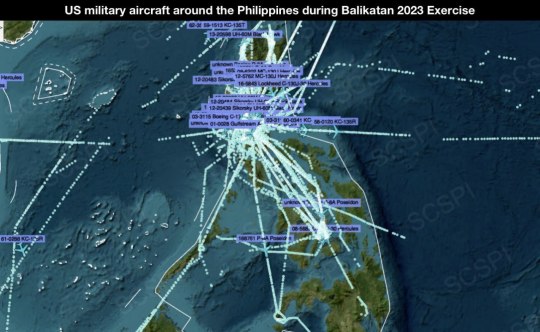


⚠️ L'ESERCITAZIONE CONGIUNTA TRA USA E FILIPPINE È UNA CHIARA MINACCIA ALLA REPUBBLICA POPOLARE CINESE ⚠️
🇵🇭 Negli ultimi mesi, il Governo della Repubblica delle Filippine ha continuato a cedere enormi porzioni di sovranità agli imperialisti USA, che hanno istituito quattro nuove Basi Militari in diverse zone dello Stato Insulare:
1️⃣ Base Navale "Camilo Osias" a Santa Ana, nella Provincia di Cagayan 🇵🇭
2️⃣ Campo Base "Melchor Dela Cruz" a Gamu, nella Provincia di Isabella 🇵🇭
3️⃣ Base sull'Isola Balabac, nella Visayas Occidentale 🇵🇭
4️⃣ Base Aerea a Lal-lo, nella Provincia di Cagayan 🇵🇭
🤡 Nonostante il Presidente Marcos Jr. abbia tentato di destreggiarsi tra le due superpotenze, dichiarando a Qin Gang - Ministro degli Affari Esteri della Repubblica Popolare Cinese - che le Filippine rispettano il Principio dell'Unica Cina, il Governo Filippino ha poi inaugurato l'Esercitazione "Balikatan - 2023", la più grande esercitazione militare congiunta USA - Filippine di sempre, chiaramente in funzione anti-Cinese ⚔️
🖼Grazie a China Army, abbiamo la Mappa Termica delle attività militari USA nelle Filippine. Qui la lista degli Aerei USA che hanno preso parte all'esercitazione dall'11/04 al 28/04 🤔
🇨🇳 Inoltre il 28 aprile, una Nave della Guardia Costiera Cinese ha bloccato il passaggio di una nave Filippina in una zona contesa a largo del Ren'ai Reef, nel Mar Cinese Meridionale, e il Governo Cinese ha invitato nuovamente il Governo Filippino a rispettare la Sovranità Territoriale della Cina, nonché i diritti e gli interessi Cinesi nel Mar Cinese Meridionale ❗️
🌸 Iscriviti 👉 @collettivoshaoshan
⚠️ JOINT US-PHILIPPINES EXERCISE IS A CLEAR THREAT TO THE PEOPLE'S REPUBLIC OF CHINA ⚠️
🇵🇭 In recent months, the Government of the Republic of the Philippines has continued to cede huge portions of sovereignty to the US imperialists, who have established four new military bases in different areas of the island state:
1️⃣ "Camilo Osias" Naval Base in Santa Ana, Cagayan Province 🇵🇭
2️⃣ Base Camp "Melchor Dela Cruz" in Gamu, in the Province of Isabella 🇵🇭
3️⃣ Base on Balabac Island, Western Visayas 🇵🇭
4️⃣ Air Base in Lal-lo, Cagayan Province 🇵🇭
🤡 Although President Marcos Jr. tried to juggle the two superpowers, declaring to Qin Gang - Minister of Foreign Affairs of the People's Republic of China - that the Philippines respects the One China Principle, the Philippine Government then inaugurated the Exercise "Balikatan - 2023", the largest joint US-Philippines military exercise ever, clearly anti-Chinese ⚔️
🖼Thanks to China Army, we have Heat Map of US military activities in the Philippines. Here is the list of US aircraft that took part in the exercise from 11/04 to 28/04 🤔
🇨🇳 Also,on the - April 28, a Chinese Coast Guard Vessel blocked the passage of a Philippine vessel in a disputed area off Ren'ai Reef in the South China Sea, and the Chinese Government re-invited the Philippine Government to respect China's Territorial Sovereignty as well as Chinese rights and interests in the South China Sea ❗️
🌸 Subscribe 👉 @collettivoshaoshan
#socialism#china#italian#translated#china news#communism#collettivoshaoshan#xi jinping#marxism leninism#marxist leninist#marxismo#marxist#marxism#multipolar world#multipolarity#qin gang#marcos jr#western imperialism#american imperialism#one china principle#chinese communist party#geopolitics#philipines#asia news#military news#news#socialismo#socialist#people liberation army
2 notes
·
View notes
Text
Breathtaking Batanes
An archipelago province in the Philippines' Cagayan Valley is called Batanes. It is the most northern and smallest province in the Philippines, both in terms of population and land area. It is known for its scenic waters and terrain and clean environment.
One of the famous tourist spot in the batanes is Racuh a Payaman the “iconic hills and ocean view in Batanes”. The location is actually called Racuh A Payaman, but since one visitor said, "It looks like the Marlboro Country," Racuh A Payaman has also come to be known as the Marlboro Hills. It is a well-liked tourist spot where people from all over the world can freely wander around and mingle with cows, horses, water buffaloes, and locals.
Enchanting landscapes that will surely take your breath away. The cold breeze on top of the rolling hills make you just lie down and look up on the blue clear skies and daydream.





4 notes
·
View notes
